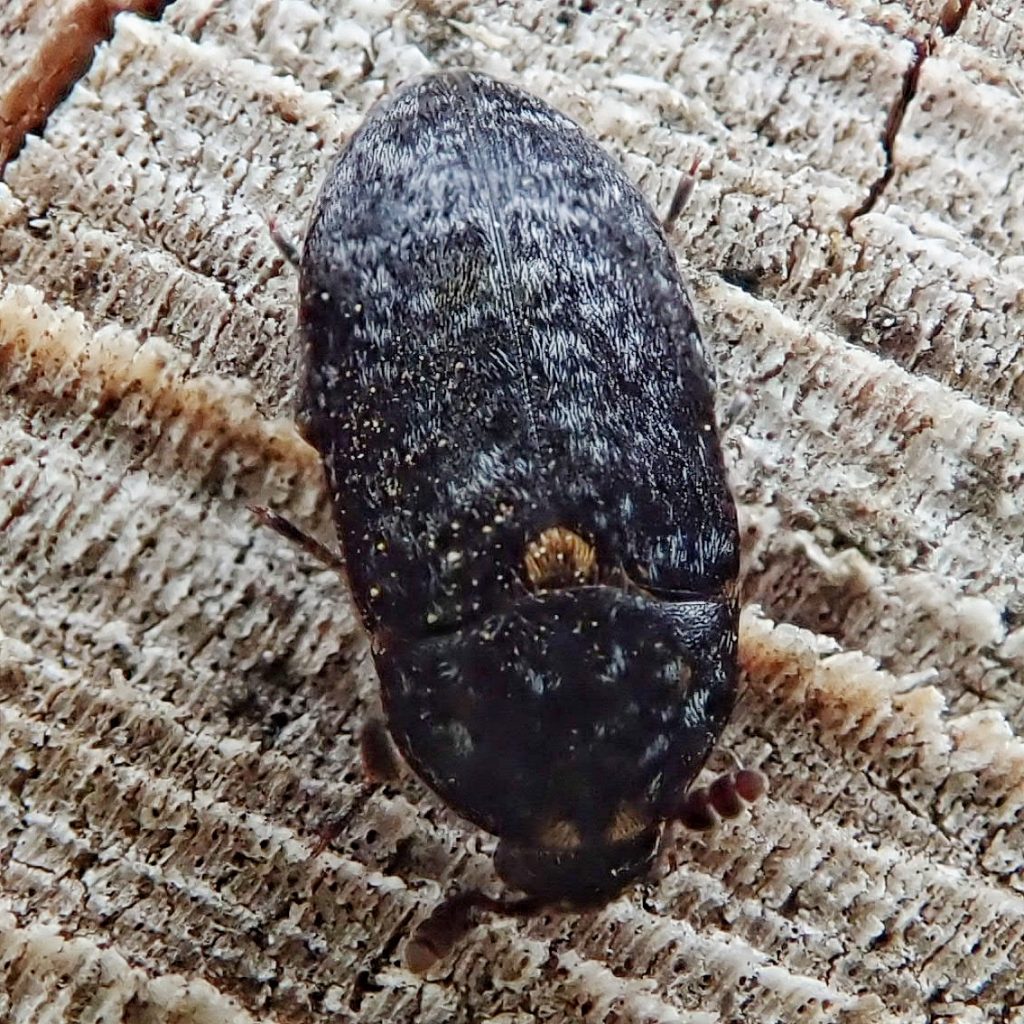
I have decided, since it is my site and certain limitations are necessary, that it is beyond the purview of being a recreational naturalist to do genitalic dissections. I may attempt to do some in the future, but in cases like the present one (where I’m not sure I have the knowledge or experience to make the right call even if I did manage to extract the genitalia without destroying it, since I can’t even see major differences in the illustrations), I’m going to leave the identification ambiguous.
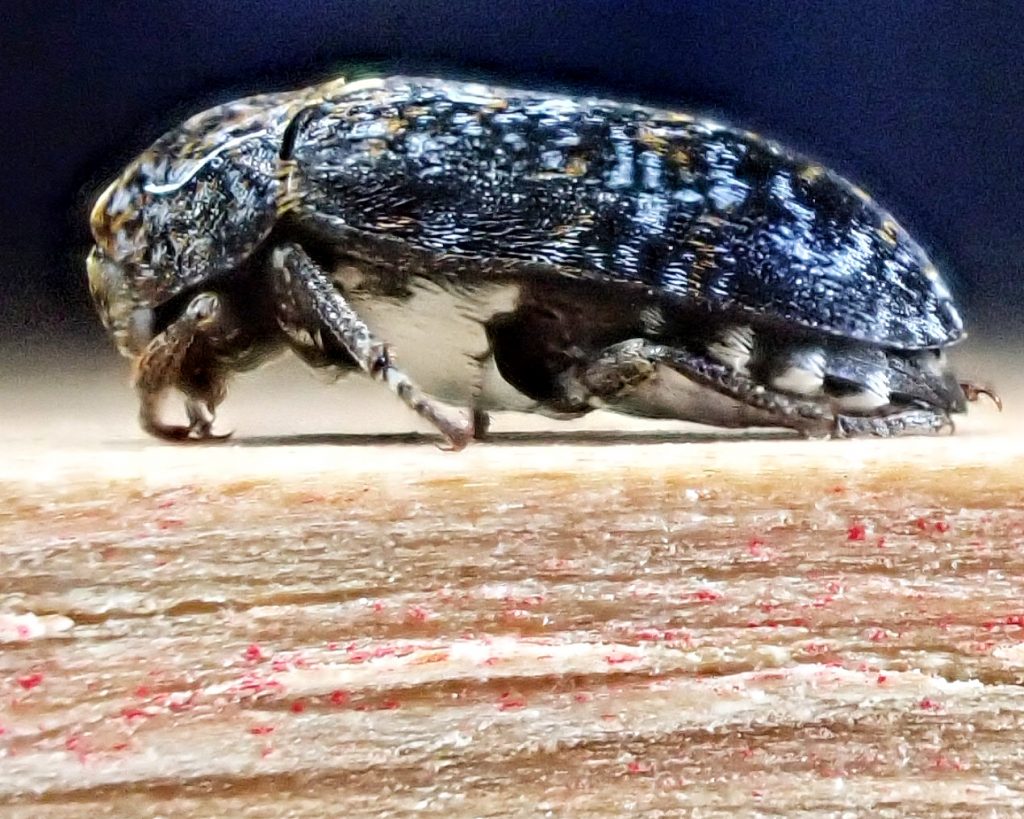
In this case I was able to narrow it down to either Dermestes talpinus (its common name is ‘hide and tallow dermestid’) or D. undulatus, because these specimens lacked spines on the elytral suture, did not have uniform gray pubescence (hairs) on the basal elytra or on the pronotal margins, did have variegated gray pubescence which lacked light areas on the elytra, and did have some rufous hairs on the pronotum. But then it gets confusing.
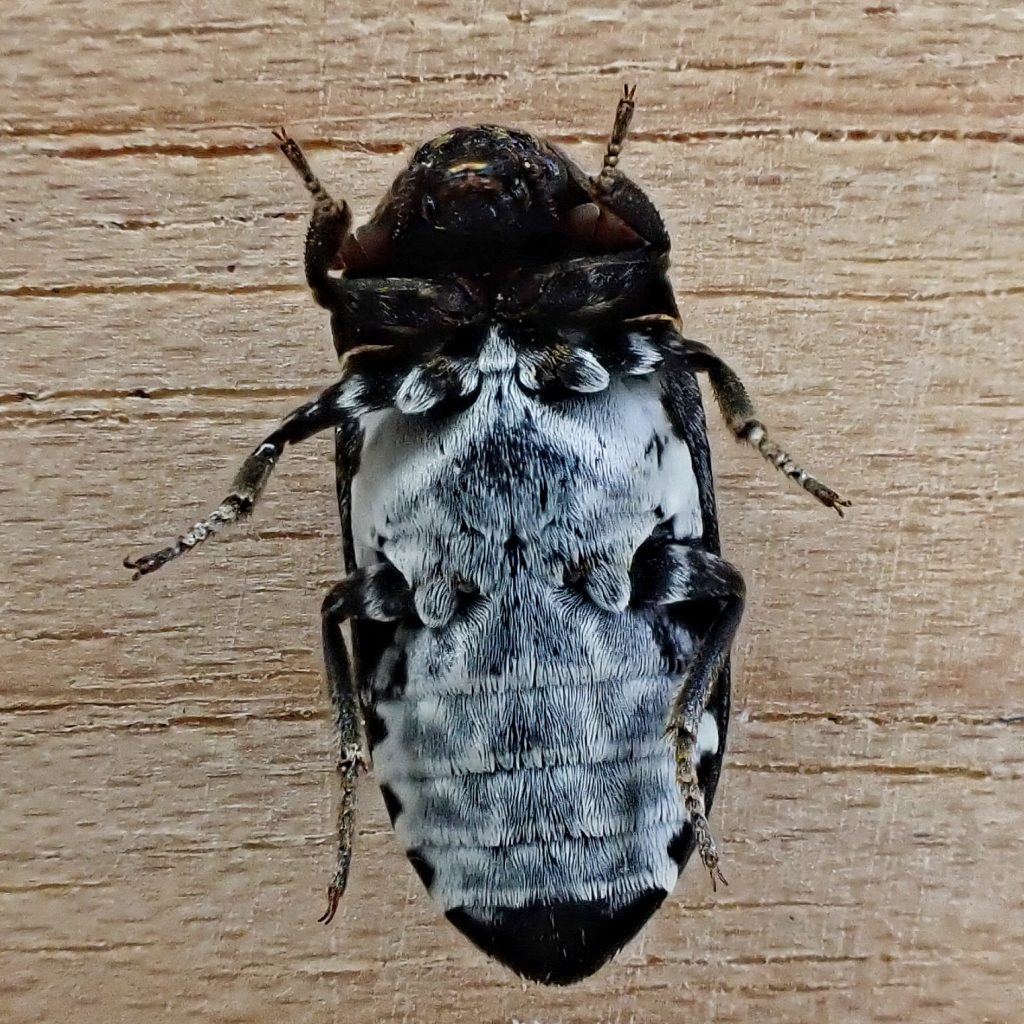
For one thing the key that I was using in Hatch (vol3; 1961) lists our beetle as D. undulatus ssp. talpinus. Now they know that D. undulatus is a European species, while D. talpinus is a North American native. But the maculation differences between the two are slight, and variation within each species crosses the lines. From everything I read it looks like D. talpinus tends to have less rufous on the pronotum, and more white on the abdomen, in particular a fourth set of white extensions to the abdominal margin. That seems to indicate that this is D. talpinus, except that these white extensions are somewhat diffuse, and I’ve seen photos purported to be D. undulatus that show similar diffuse extensions, as well as limited rufous on the pronotum. That is why I’m going with Dermestes talpinus/undulatus.
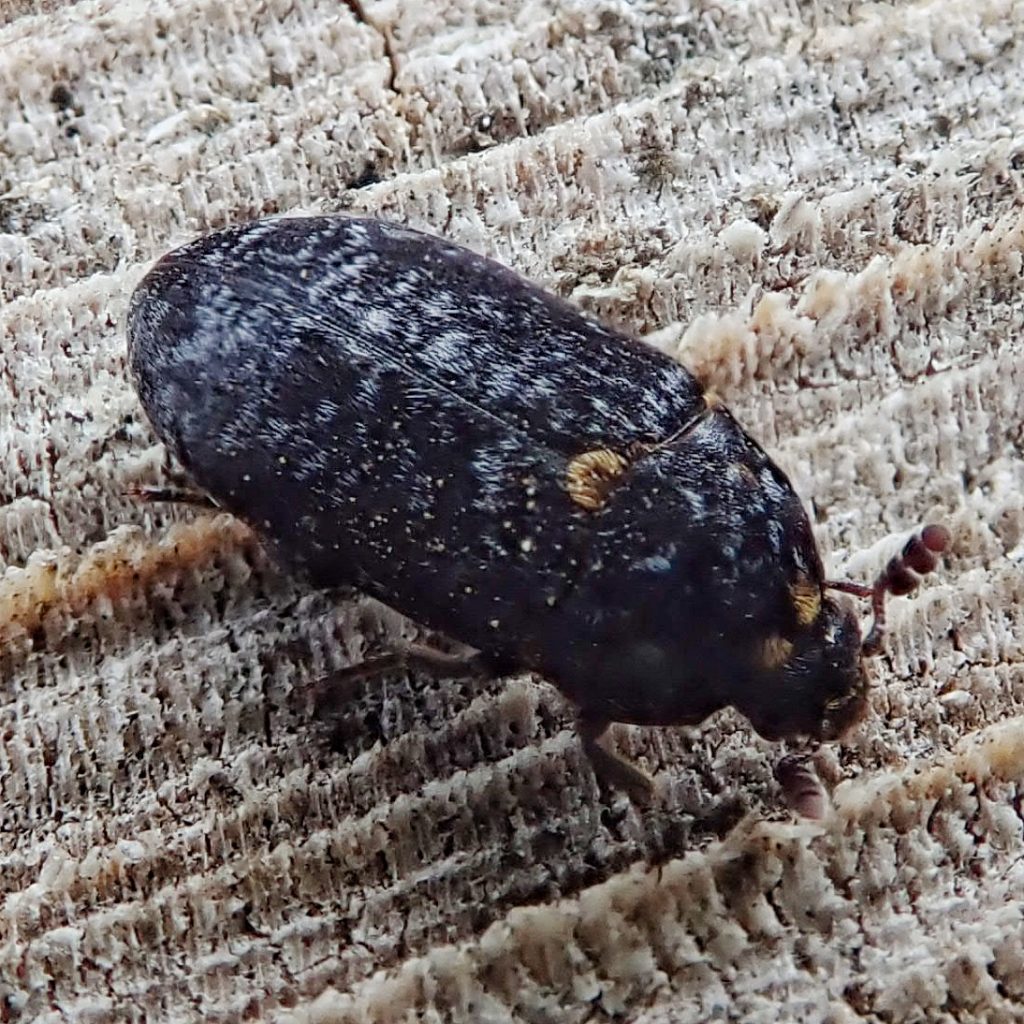
Members of the family Dermestidae (skin beetles) are, in general, scavengers of high protein plant and animal parts. Indoor species can be a real pest, consuming wool, fur, silk, leather, pet food, and dried meats and cereal grains. Outdoor species tend to focus on carrion, and bird and mammal nests. Because of their habits some species have forensic uses, to determine how long a corpse has been dead. They are often used by museums (particularly Dermestes maculatus) to thoroughly and efficiently clean bones of tissue. But many members of the family can also be problematic for museums and natural history collections, because they will consume hair, feathers, insects and any other dried organic protein they can find.
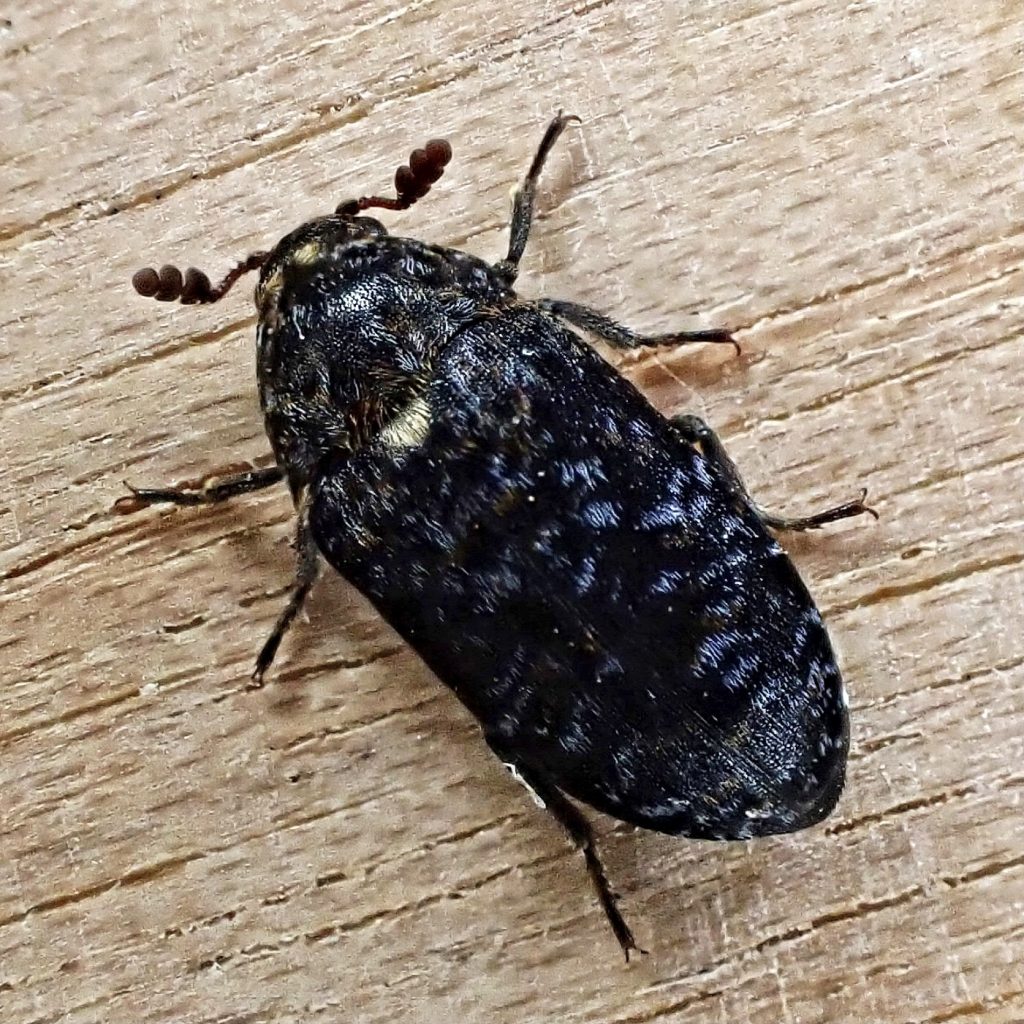
My friend Mike found these 3 specimens under a dead mouse while we were doing some cleanup on the charred landscape of his property, and knowing I’d be interested, he called me over. Fortunately they remained in place, playing dead instead of scurrying off, long enough for me to take some photos and collect a specimen. It was somewhat unusual to find them under fresh remains. Beetles in this genus tend to prefer desiccated carrion.
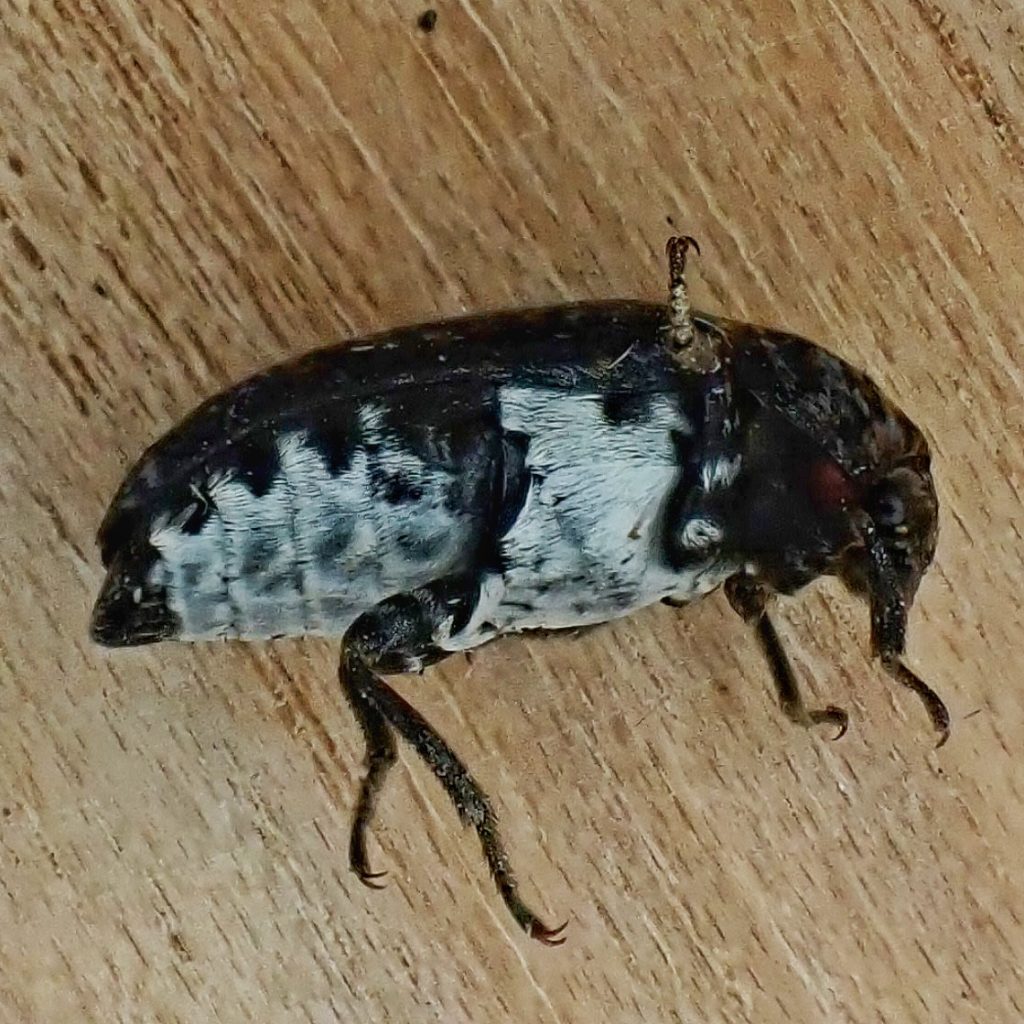
Description– Fairly small (5-8mm) beetle with clubbed antenna and pronotum as wide as elytra, and 1/3-1/2 as long; variegated grey pubescence on elytra and pronotum, without light or dark spots, but with varying amounts of rufous hairs; scutellum yellow orange; may have 2 rufous spots on the head; lacks spines on elytral suture; abdomen mostly white.
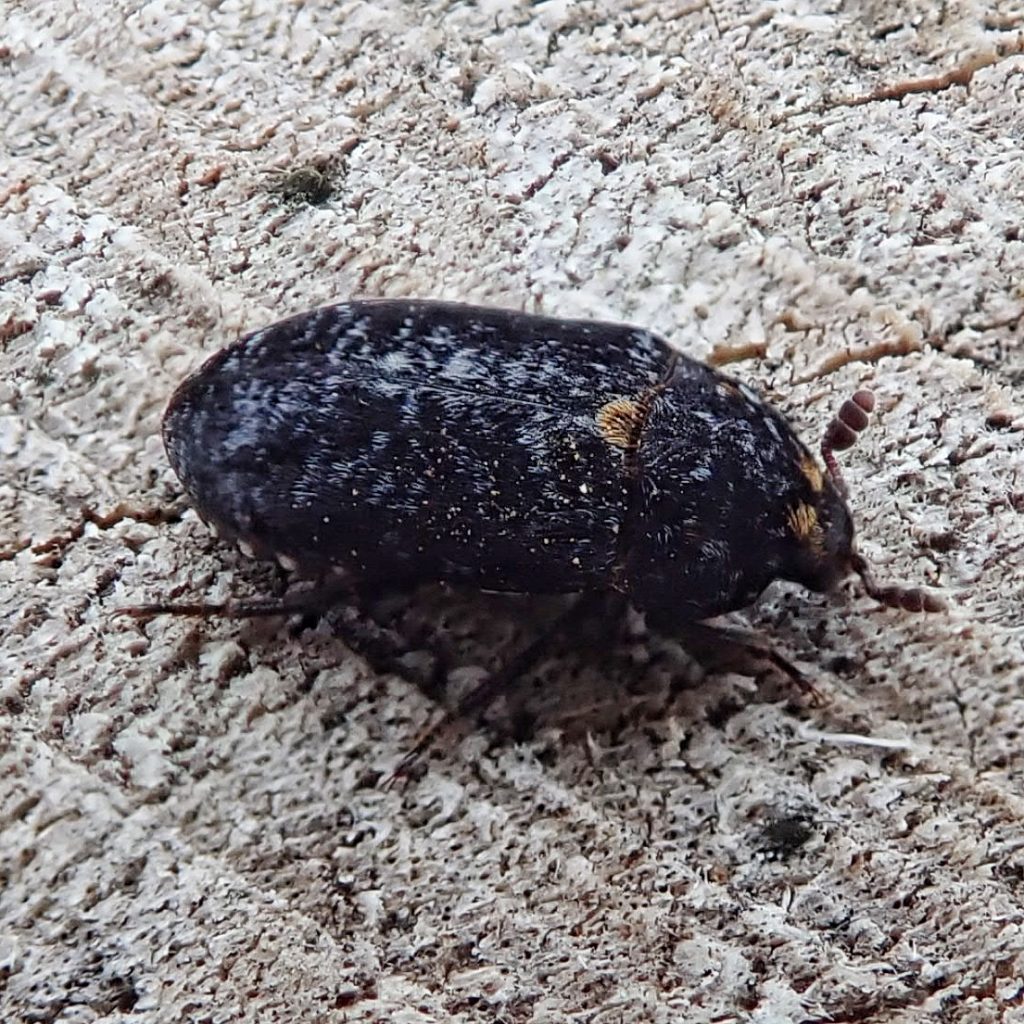
Similar species–D. maculatus has spiny elytral suture; D. frischii and D. carnivorus with solid grey pubescence along lateral margins of pronotum; D. ater pronotum and elytra uniformly covered with grey and black pubescence; D. lardarius, D. reductus, D. signatus, D. marmoratus are solid grey on basal half of elytra.
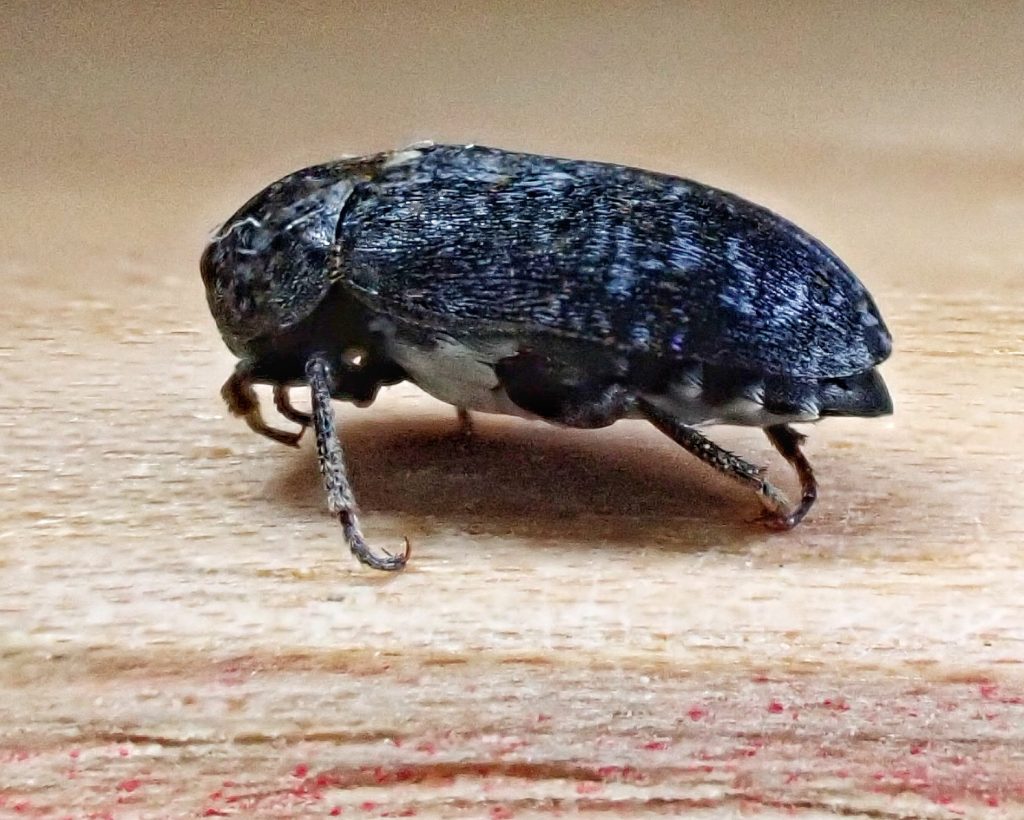
Habitat-Wherever there is carrion
Range-Probably region wide
Eats-Usually dried carrion, for both adults and larvae.
Eaten by– It is possible that these species prefer desiccated carcasses because that lowers the risk of accidental ingestion by carrion feeders; larvae that don’t find suitable shelter in which to pupate are often cannibalized by conspecific larvae.
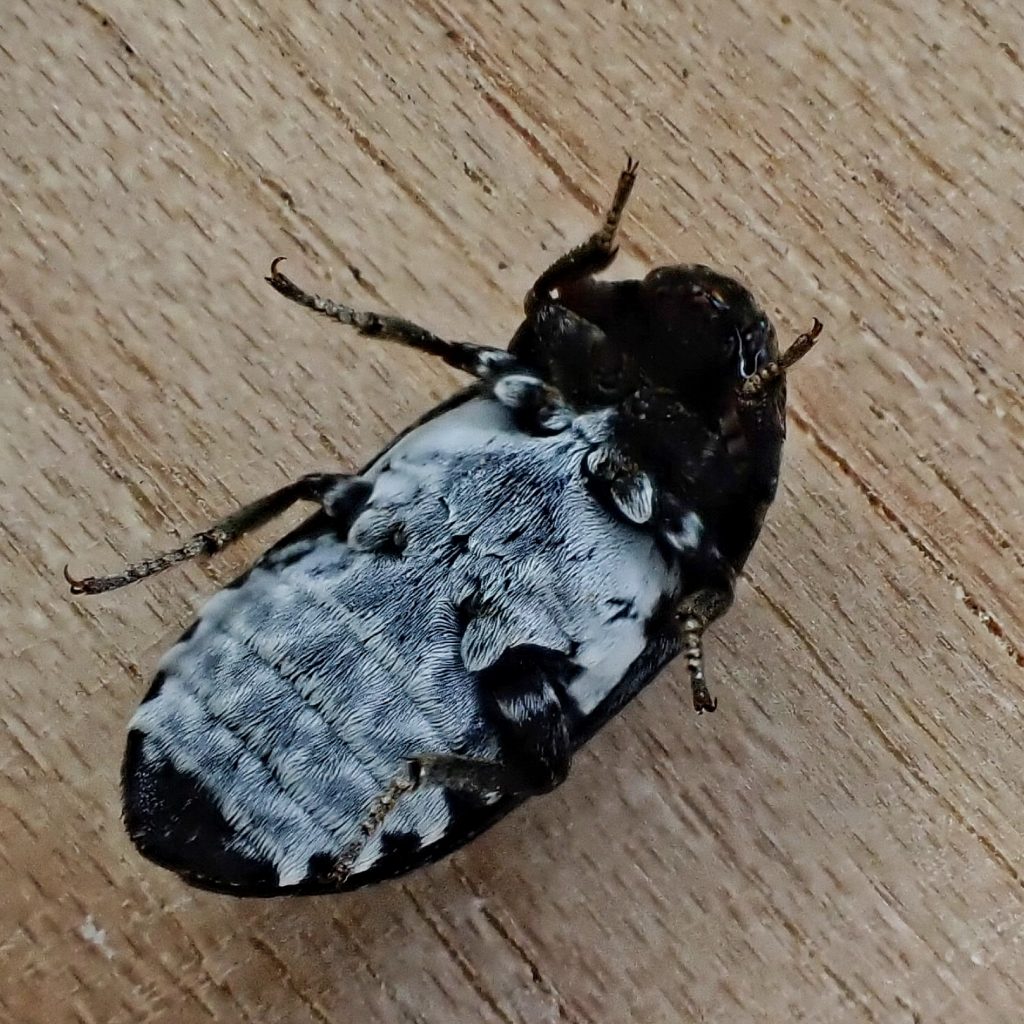
Reproduction– Males secrete pheromones to attract females to the food source; up to 20 eggs are laid in the substrate on which the parents are feeding; larvae drill long corridors in hard material in which to pupate; time from hatching to adulthood is 5-7 weeks.
Adults active-April to August; adults live 4-6 months
Etymology of names–Dermestes is from the Greek word for skin/hide, and refers to their propensity for consuming dried hides and other desiccated tissue. The specific epithet talpinus is from the Latin for mole, and probably refers to this species boring into carcasses. The specific epithet undulatus is from the Latin for ‘wavy’, and probably refers to the pattern of the grey pubescence on the elytra.
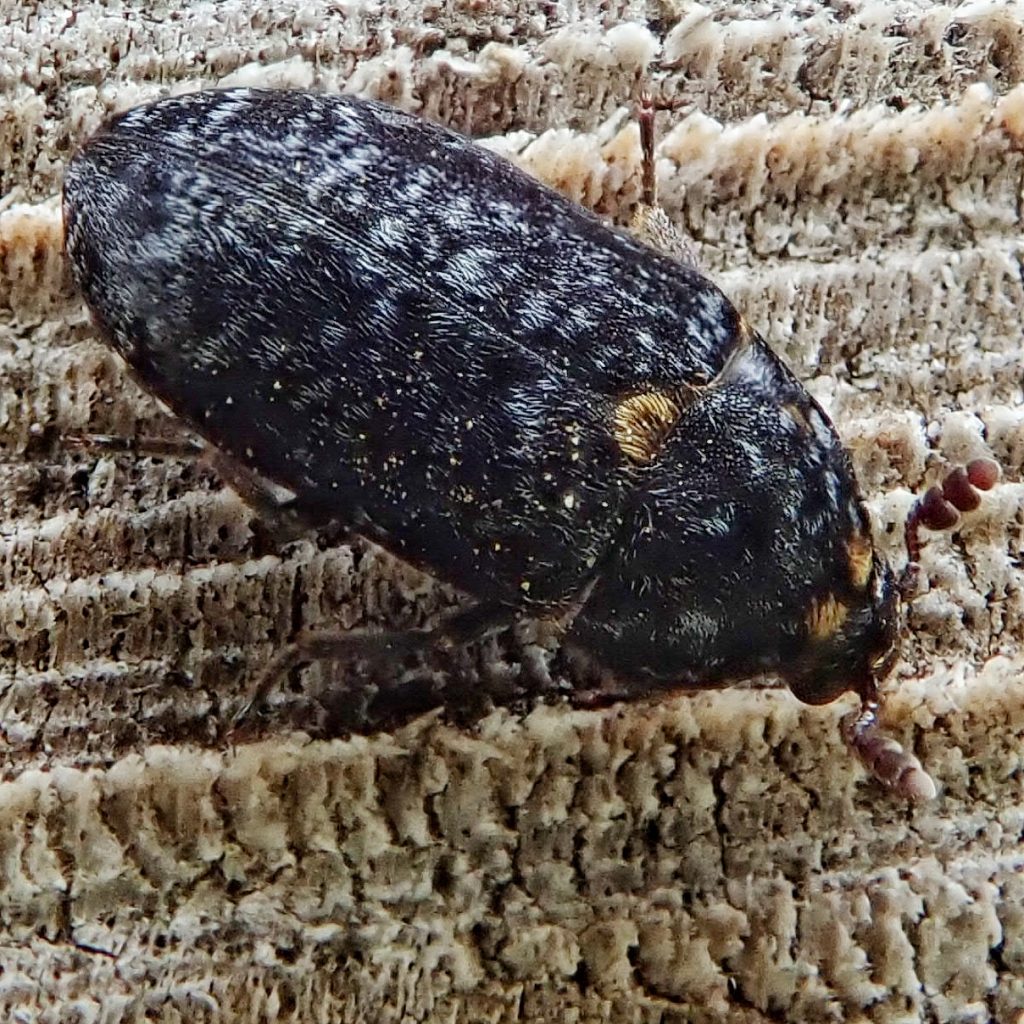
https://bugguide.net/node/view/34119
https://bugguide.net/node/view/898751
http://wci.colostate.edu/Assets/pdf/CIIFactSheets/DermestidBeetlesDec17.pdf
https://bugguide.net/node/view/6449
https://en.m.wikipedia.org/wiki/Dermestes
http://www.dermestidae.com/Dermestestalpinus.html
http://www.dermestidae.com/Dermestesundulatus.html
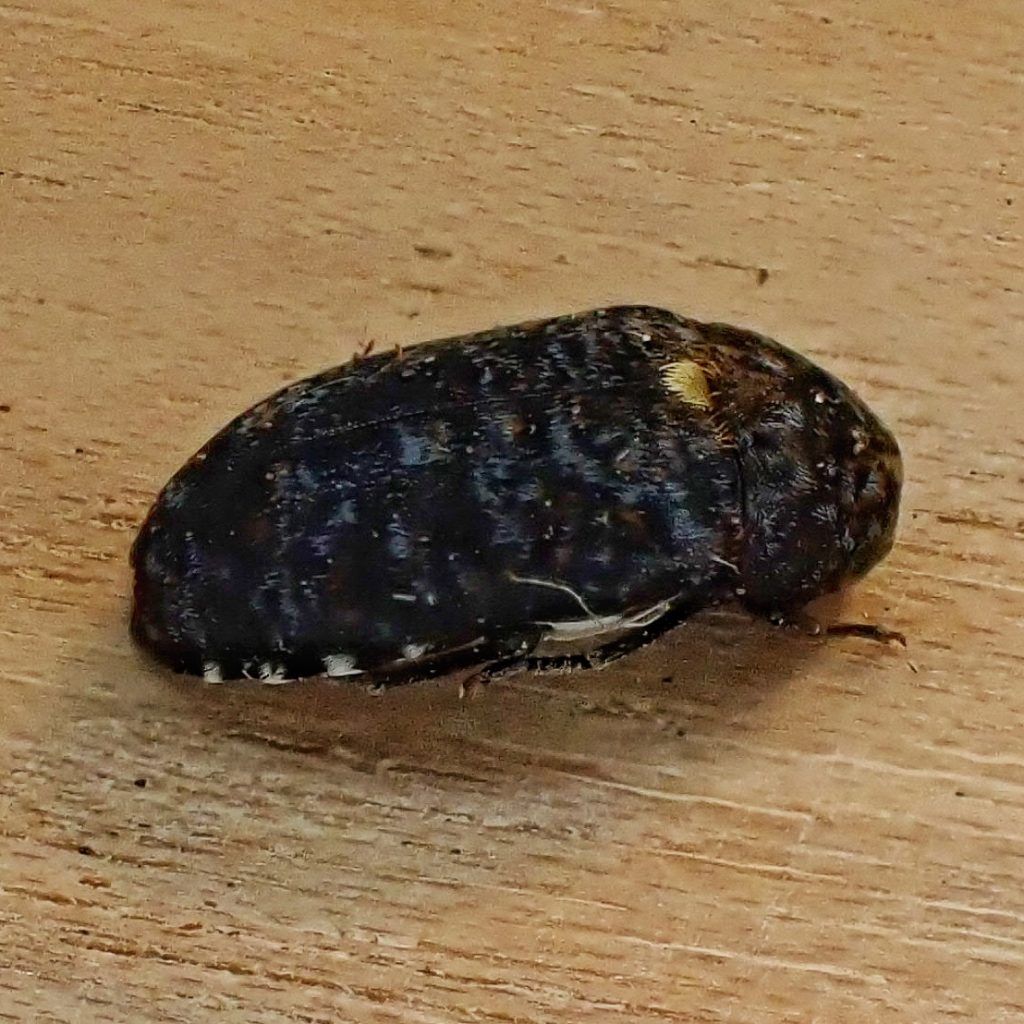
I had the same difficulty with a specimen I found (ID)… I found larvae then adults as I examined a “preserved” skin of a squirrel. Much effort to then find others in the collection… apparently they were better “preserved”, and we needn’t have worried so much. We still have no idea how the beetles got to the one specimen. Our suspicion is that the skin got exposed while in an exhibition with other artifacts… One of the true horrors of museum work. Thank you for the detail and humility about the id… it makes me feel a bit better about my own limitations.
A friend of mine lost several thousand insects to a dermestid invasion. They can really be problematic!
I’m definitely having to dial back my expectations on positive identification of invertebrates. I’m trying to accept ambiguity. Might even have philosophical implications 😀